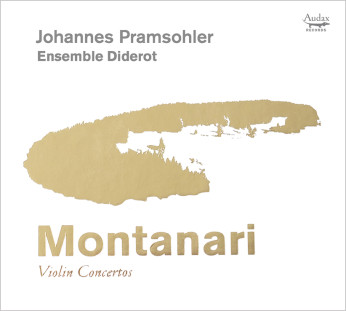London foists hard choices on concertgoers. Over at St John's Smith Square last night Nikolai Demidenko was giving a high-profile recital of Brahms and Prokofiev. But since the Prokofiev CD which has had the most impact in recent years has been Freddy Kempf’s, of the Second and Third Piano Concertos with the Bergen Philharmonic and Andrew Litton, a half-full Cadogan Hall seemed like the right place to be, even without Prokofiev on the programme.

“People think when a person becomes old, he has to become serene,” declared that great pianist Claudio Arrau in his mid-seventies. “That’s absurd. The expressive intensity is, I feel, much stronger, much more concentrated in my playing than years ago.” You could argue the same for Stephen Kovacevich at his 75th birthday concert, though in the case of Schubert’s final, B flat Piano Sonata, was it entirely intensity that had him racing through a work that, back in 1982, he took about 10 minutes longer over, albeit with repeats?

Stanisław Skrowaczewski has become a legend in his own, considerable, lifetime. From the ecstatic ovation as he took the stage, it seemed many were here just to see this iconic figure in the flesh. Fortunately, the performance of Bruckner’s Fifth Symphony that followed fully justified the reception. The interpretation was vibrant and intuitive, with tempo and dynamic decisions seemingly coming from inside the music itself. A few imprecise textural details suggested that age is finally (at 92!) catching up with the great man, but those didn’t matter a bit. This was classic Skrowaczewski.

Sometimes it’s visual art with a sonic slant; sometimes it’s music with a visual slant. Glasgow’s Sonica – created by producers Cryptic, now in its third year and bigger than ever – feels like a thoroughly modern festival, defying genre boundaries and instead focusing squarely on the intersection of the sonic and the visual. That might make some of its offerings hard to categorise, but there’s nothing wrong with that.

 Montanari: Violin Concertos Johannes Pramsohler (violin and director), Ensemble Diderot (Audax Records)
Montanari: Violin Concertos Johannes Pramsohler (violin and director), Ensemble Diderot (Audax Records)

For a few very lucky competition winners there is a shopping trip where they are paraded around the world. A terrific opportunity, though a horrible experience, probably. Most competition winners have only a new line in their CV to stare at after the award ceremony, so the advantage of being a 2015 Tchaikovsky laureate, with a promise of an international tour with Valery Gergiev and the Mariinsky Orchestra, is self-evident.

Final thoughts: a fitting theme for the farewell concert of this year’s Gewandhaus Barbican residency. But the connections proved tenuous: Death and Transfiguration, the gloomy opener, was written when Strauss was only 25, and the Mozart Clarinet Concerto which followed, while it was one of his last works, shows little concern for mortality or summation. But the motivation was honourable – to find homes for Strauss’ tone poems, which rarely fit comfortably in any concert programme.

In practice as well as in prospect, the second in Riccardo Chailly’s Strauss/Mozart trilogy was a concert of two very different halves. The first offered small Bavarian and Austrian beer in the shape of Strauss’s fustian Macbeth, unbelievably close in time to the masterly Don Juan which blazed on Tuesday, and a pretty but just a little too anodyne Mozart violin concerto at the other end of Mozart’s prodigious composing life to the last work for piano and orchestra, which had amazed us in the first concert.

Riccardo Chailly’s Strauss odyssey with his Leipzig orchestra peaked in Saxony last year, the 150th anniversary of the composer’s birth. I was lucky to catch a razor-sharp Till Eulenspiegel and a saturated Death and Transfiguration in Dresden’s Semperoper close to the birthday. 14 months on, and the Barbican has nothing like the same necessary air to offer around a mini-residency of richly-scored symphonic poems.

The justification for playing Brahms with a chamber orchestra is well rehearsed. In fact, I have on my desk a Telarc boxed set of the four symphonies “in the style of the original Meiningen performances”, recorded by the Scottish Chamber Orchestra under the visionary Sir Charles Mackerras in 1997. Then, as now, the idea was to lighten the texture and give greater prominence to the woodwind. By drawing back the dense curtain of string sound, the light could shine through and Brahms’ contrapuntal delicacy be revealed.

